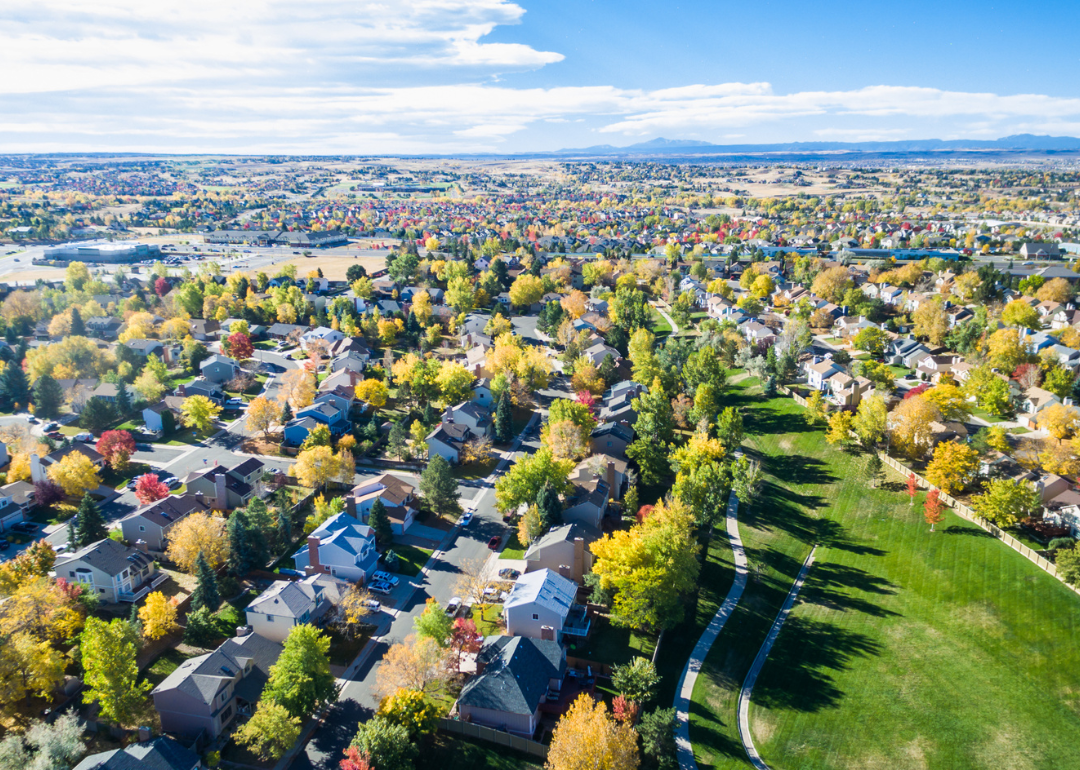
States that have seen the largest rent growth so far in 2023
This story originally appeared on Belong and was produced and distributed in partnership with Stacker Studio.
States that have seen the largest rent growth so far in 2023
After a post-pandemic surge, rental rate increases are slowing down, growing just 2.6% in the first seven months of 2023.
In the last five years, renters have felt the pressure on their budgets, but most of the pain has come since the pandemic. Although average rent prices fell for a few months at the onset of the pandemic as people left major cities, demand rebounded as the price of homes soared, putting homeownership out of reach for many. According to Apartment List, the overall median rent in the U.S. has risen 22.4% to $1,372 since March 2020.
Now that growth is tapering off, partly due to the completion of apartments that underwent construction during the COVID-19 pandemic. Through 2024, about 1 million multifamily rental units should hit the market, Apartment List's chief economist Igor Popov told The Washington Post, which may help meet some of the demand.
However, rents are still rising and generally remain high, creating affordability issues in many parts of the country, as inflation and the end of pandemic eviction protections continue to drag on renters' budgets.
Belong looked at which states have recorded the biggest rent growth in the first half of 2023 using data from Apartment List. The data represents the overall average monthly rent in these states from January to June 2023, compared to the average 2022 rent. Data was not available for Alaska, Maine, or Vermont.
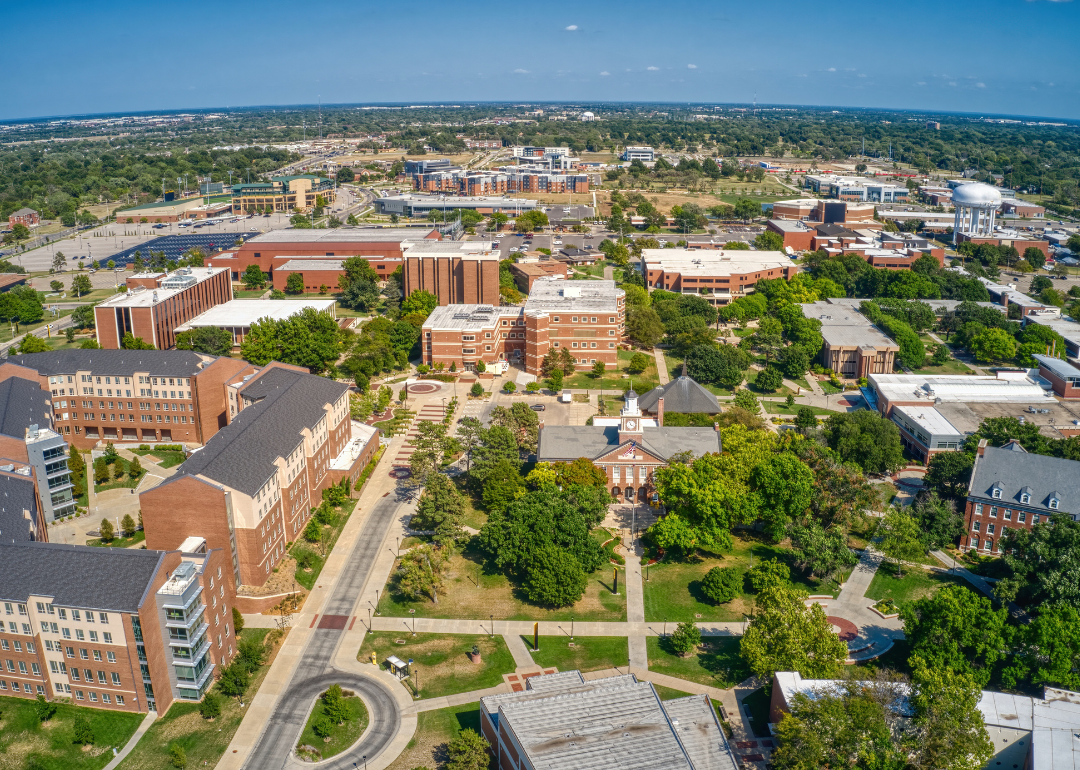
#10. Kansas
- Median rent, 2023 YTD: $1,063
- Change from 2022: 2.5%
Even though there's plenty of demand for rentals in cities like Wichita, a lack of new development continues to put pressure on the market. That's partly due to high construction costs, which developers can't easily recoup through rents, as rents in the city are still relatively low, per KWCH.
Wichita's not the only city with high demand—Overland Park, a suburb of Kansas City, is one of the most popular rental markets in the country, according to a July 2023 RentCafe analysis, due to its affordability within the metro area.
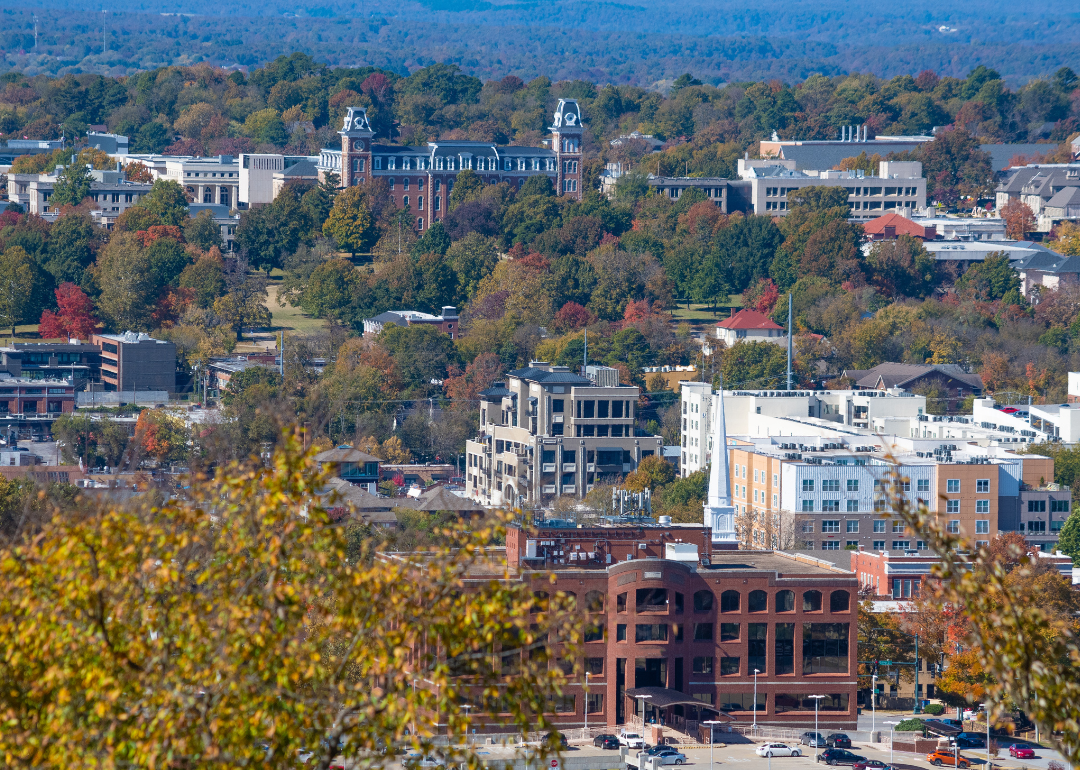
#9. Arkansas
- Median rent, 2023 YTD: $983
- Change from 2022: 2.6%
Although statewide rents are still on the rise, prices in Northwest Arkansas have been increasing faster than the rest of the state. According to Axios, rents in this region have risen 27% since 2001.
Meanwhile, vacancy rates in the region's key towns of Rogers, Bentonville, Springdale, and Fayetteville are below 3%, which essentially means full occupancy—since some apartments will need to be offline for repairs, painting, or cleaning at any given time.
In Little Rock, in the central part of the state, a three-decade focus on commercial development has contributed to a lack of residential rental options, KATV reports. This has caused an increase in rental prices across the city.

#8. Iowa
- Median rent, 2023 YTD: $951
- Change from 2022: 2.6%
In Iowa, both single-family homes and apartment rentals have experienced rate increases. In Des Moines, that makes for a tighter rental market for younger workers coming into the job market and people who have relocated from larger, more expensive cities, WHO-13 reports.
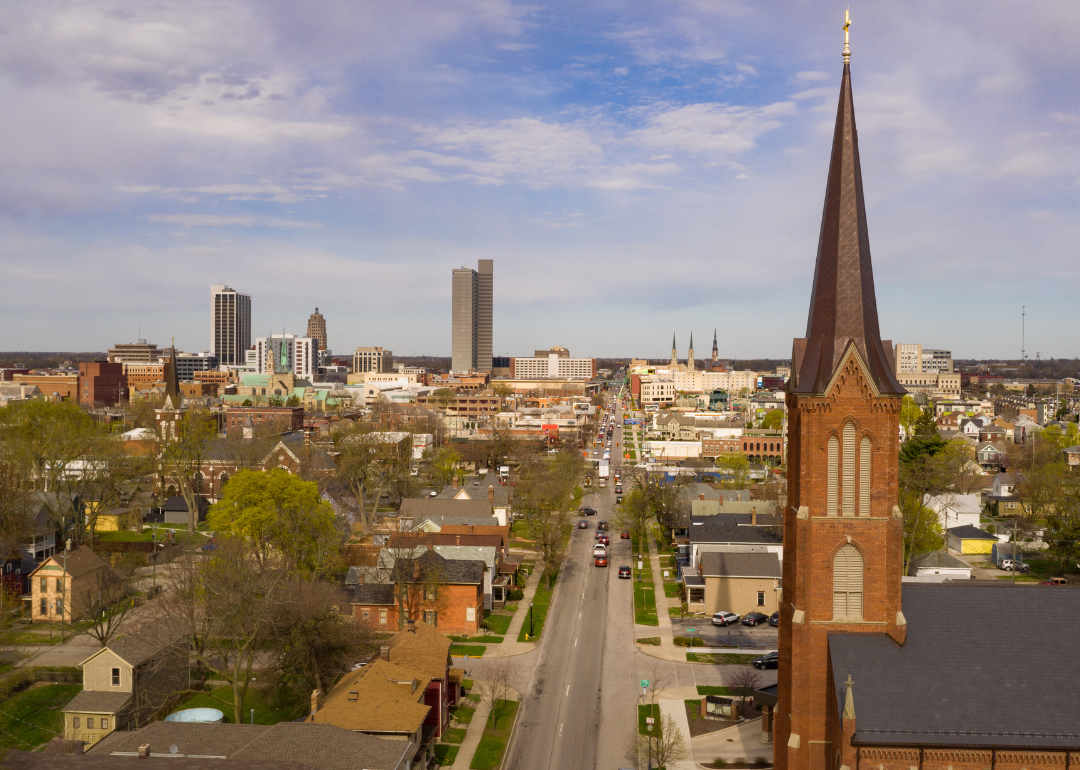
#7. Indiana
- Median rent, 2023 YTD: $1,089
- Change from 2022: 2.8%
A report by the National Low Income Housing Coalition and Prosperity Indiana notes that to keep housing costs at no more than 30% of income—a figure financial experts use to determine how much someone should spend on housing and still have enough money to cover their other expenses—renters must earn an average of $19 an hour.
But renters' actual average wage is just $17.86 an hour. Renters in Indianapolis are feeling the squeeze, but more units coming on the market aren't causing rents to go down. New construction is commanding higher prices, and investors are buying older apartment complexes, renovating them, and raising the rents, Indiana University's Center for Real Estate Studies' Sara Coers told WRTV.

#6. Mississippi
- Median rent, 2023 YTD: $1,083
- Change from 2022: 3.2%
More Mississippians are opting to rent, as increases in home prices and interest rates have put homeownership out of reach for many. That's created more demand for rental units, WXXV reports.
Meanwhile, rental property owners are also facing higher costs, so they've increased rents to get a return on their investment. Demand for rentals along the Gulf Coast is so intense landlords are raising rents by hundreds of dollars, according to WLOX.
College towns are also not immune to higher prices, the Waller, Weeks and Johnson Rental Index notes. Renters are paying 20% more in Oxford, home to the University of Mississippi, because the city doesn't have enough inventory to meet demand.

#5. Wisconsin
- Median rent, 2023 YTD: $1,078
- Change from 2022: 3.2%
While demand is a factor in rental increases, in Wisconsin, this demand is driven by people who want to live on their own, PBS Wisconsin reports. According to the state's Demographic Services Center, the average household size has dropped from 3.224 people in 1970 to 2.353 people in 2022, even though the population has grown by 1.53 million people during that same time.
Costs for building owners have also skyrocketed, who have to manage higher prices for financing, maintenance, repair, and even cleaning costs, which require them to raise rents to cover their investment.
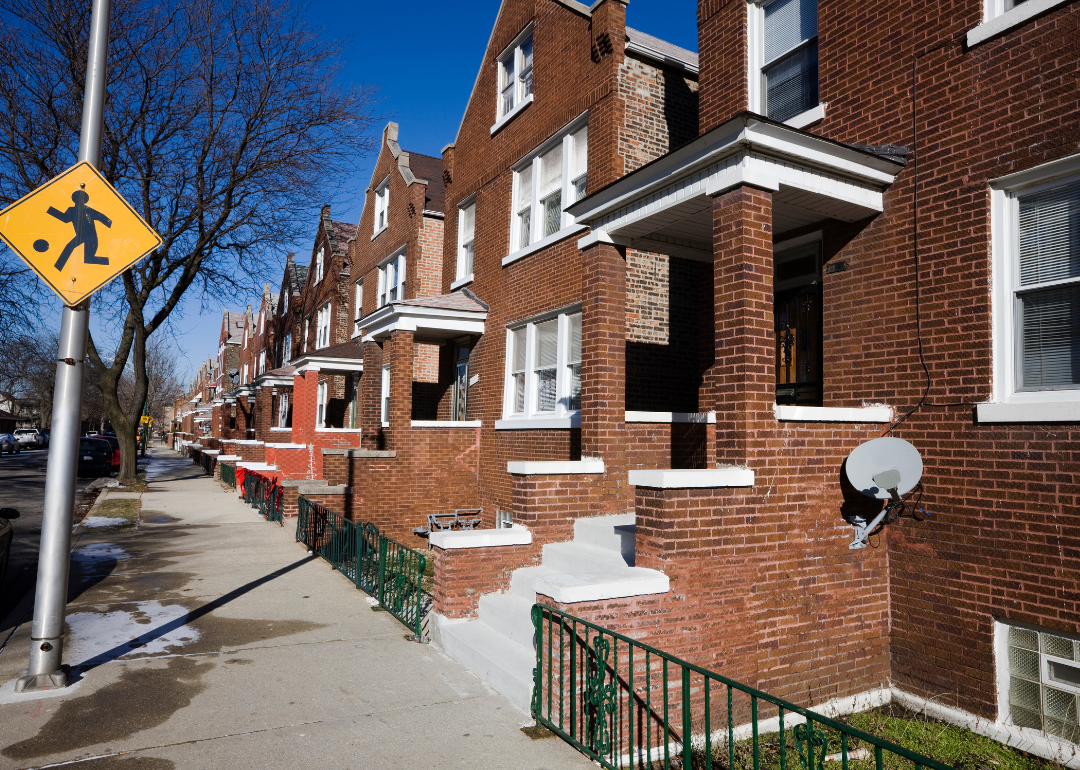
#4. Illinois
- Median rent, 2023 YTD: $1,260
- Change from 2022: 3.4%
Between 2018 and 2022, 294,000 people left the Chicago metro area, in part due to housing affordability, according to ABC News. However, the Chicago Tribune notes that a lack of rental housing keeps prices high and sparks bidding wars for apartments in popular neighborhoods.
By 2024, 15,000 new units will come onto the market in Cook County, which should help stabilize prices. Demand has increased in other parts of the state as well. Analysis by the Bloomington-Normal Economic Development Council says the area is short at least 4,300 units, partly due to job growth as factories in the area are adding more workers.

#3. Wyoming
- Median rent, 2023 YTD: $1,057
- Change from 2022: 4.3%
Regulation may be hindering Wyoming's response to the demand for rental housing throughout the state. Harvard Growth Lab research found cities such as Casper and Cheyenne had difficulty getting government approval to build more housing to ease demand but increase density.
Meanwhile, the state's Rental Assistance Program, which helped 17,000 low-income families during the pandemic, ended in June 2023. This has taken away a safety net in a state that's short over 10,000 units of affordable housing needed to serve 25% of renters in the state, per the National Low Income Housing Coalition.

#2. Nebraska
- Median rent, 2023 YTD: $1,051
- Change from 2022: 4.5%
Between July 2021 and July 2022, Nebraska's population grew 0.22% to 1.97 million, which is higher growth than the national median of 0.19%, according to the Nebraska Examiner. Many of these people are moving to counties surrounding Omaha and Lincoln, the state's two largest cities. Housing demand has not kept up.
In Douglas County, which includes Omaha, the amount of new residential construction compares to that of the 1930s during the Great Depression, Nebraska Public Media reports. Since 2020, no more than 175 new homes have been built in any year, but the county's population has grown by 1,800.

#1. North Dakota
- Median rent, 2023 YTD: $841
- Change from 2022: 7.0%
Would-be home buyers in North Dakota are staying on the sidelines due to higher costs of home ownership. This has created more competition in the rental market, causing rent increases. Vacancy rates have tightened in many—but not all—areas of the state.
While an 8% vacancy rate is considered acceptable in the state, Fargo's vacancy rate dropped from about 9% in 2020 to 3.1% in late 2022, reports the North Dakota News Cooperative. During that time, the city's population also grew by 4.4%.



